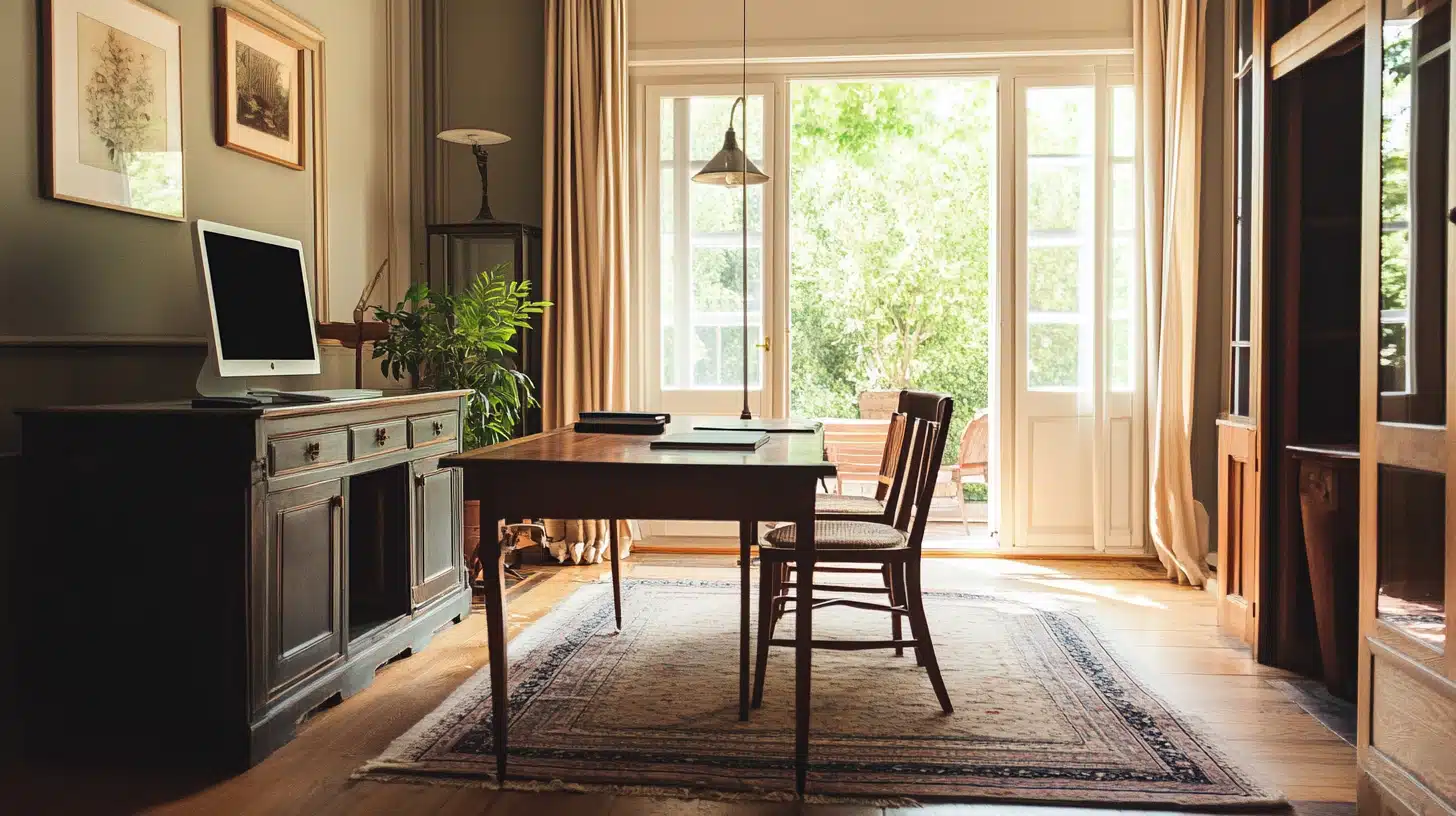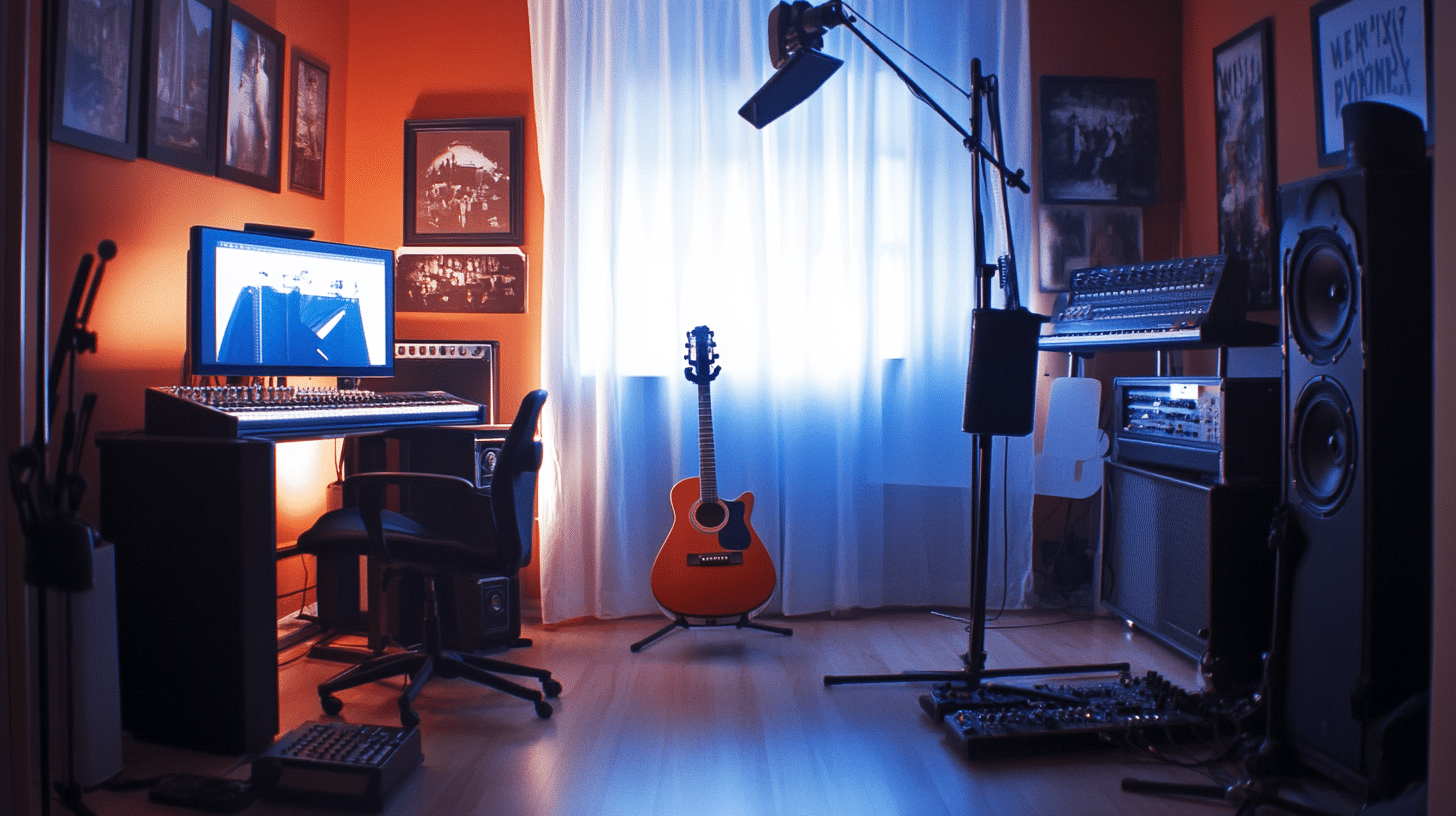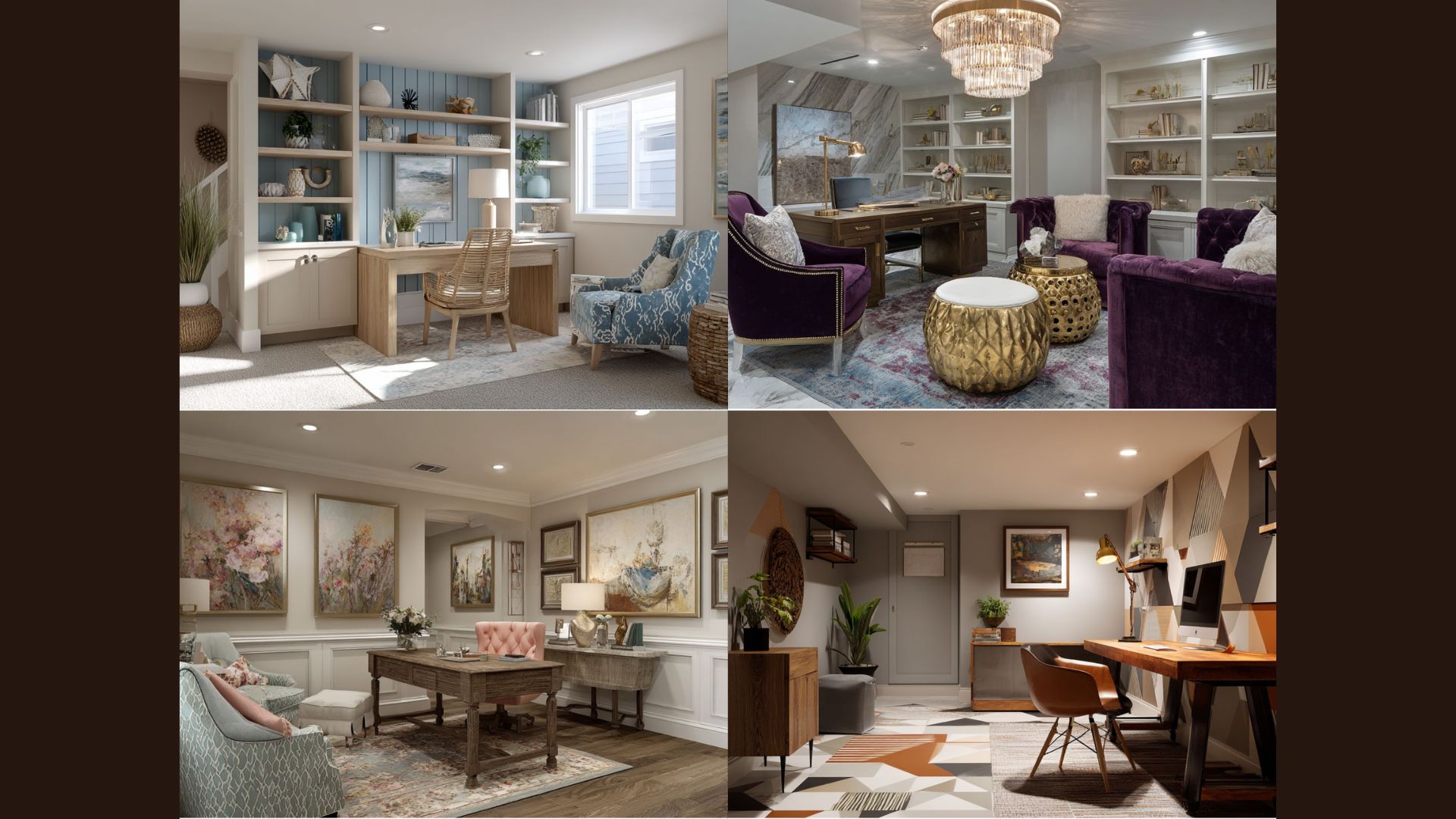Creating a Home Office Space in Your Dining Room
With the rise of remote work, it’s become more important than ever to create a space for work at home that doesn’t take over everything. Where there were once distinct places for work and living, there are now spaces that need to function as both an office and a home.
As more people find themselves working from home, the challenge of carving out a dedicated office space becomes more pressing. Many people have been getting by with a passable work from home setup but are now looking for a more permanent solution that takes their family’s needs into account as much as their work needs.
If you don’t have a dedicated room or location for a home office, there’s a good chance your workstation ended up at the dining table.
This is a common default option as a dining table is sort of a stand-in for a desk and the dining room is more out of the way than the kitchen and the bedroom. However if you work from home often, having to clear off your “desk” every time you want to use your dining table.
By reimagining existing areas of your home, like your dining room, you can achieve a new level of functionality without sacrificing comfort. Looking at spaces with a new and creative lens can allow you to design a stylish space that serves as both a home office and a dining room.
Assessing Your Dining Room
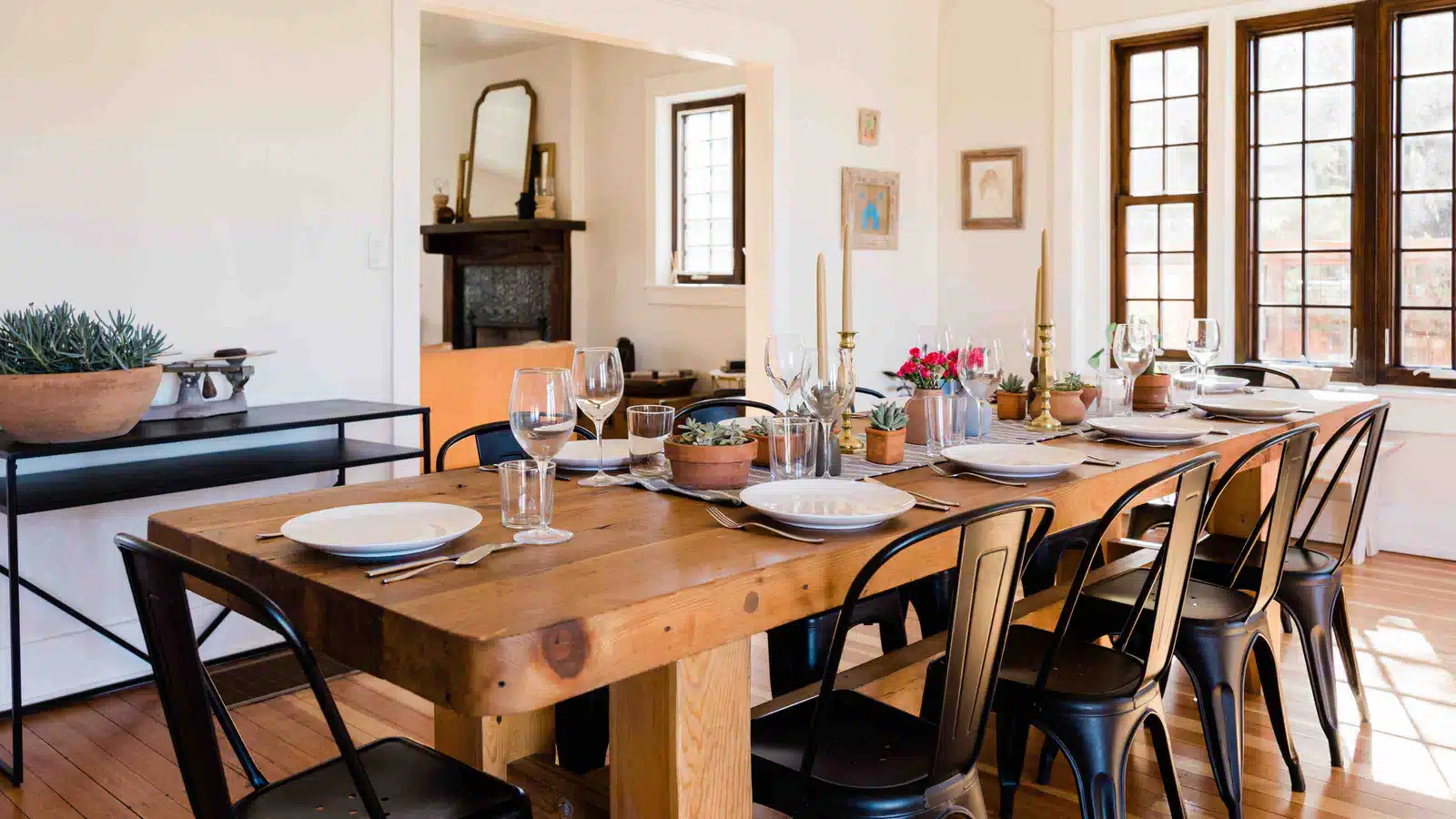
Before diving into the transformation process, take a good look around your dining room to assess its potential as a permanent workspace. Start by evaluating the available space. Do you have a dedicated dining room or a dining room area in an open-concept space?
Does the room feature windows or doors or archways? Any extras to consider like fireplaces, outdoor access, or space for children? All of these factors will impact the success of turning a dining room into a hybrid dining room/office so make sure to survey everything and take measurements.
Next, consider the room’s layout and how it could best accommodate both dining and work activities. Look for areas where a desk or workstation would naturally fit without disrupting the flow of the room. Don’t forget to pay attention to where the electrical outlets are!
Finally, take stock of your existing furniture and decor. Consider which pieces would work in a dining room office space and which might need to be replaced or repurposed to create a cohesive dual-function space.
Planning Your Dual-Purpose Space
Now that you have a clear understanding of your dining room’s potential, it’s time to plan your new dual-purpose space. Think about your specific work needs. Do you use a laptop or use multiple monitors? Does your work mostly involve typing or do you use a mouse a lot?
Do you make a lot of phone calls? Do you work with your hands or do creative work? Do you need storage for a lot of supplies or be able to access a lot of books or notepads? Think carefully about your ideal work setup then think about what your dining room can accommodate.
Balancing office and dining functions is key to creating a successful dual-purpose room. Aim for a design that allows for easy transitions between work mode and dining mode. This might involve furniture that can be easily moved or reconfigured, or storage solutions that keep work materials out of sight during meal times.
Create a design concept that unifies the office and dining elements. This could involve choosing a cohesive color scheme, coordinating furniture styles, or selecting decor that complements both functions. The goal is to create a space that feels intentional and harmonious, rather than two separate rooms forced into one.
Choosing the Right Furniture
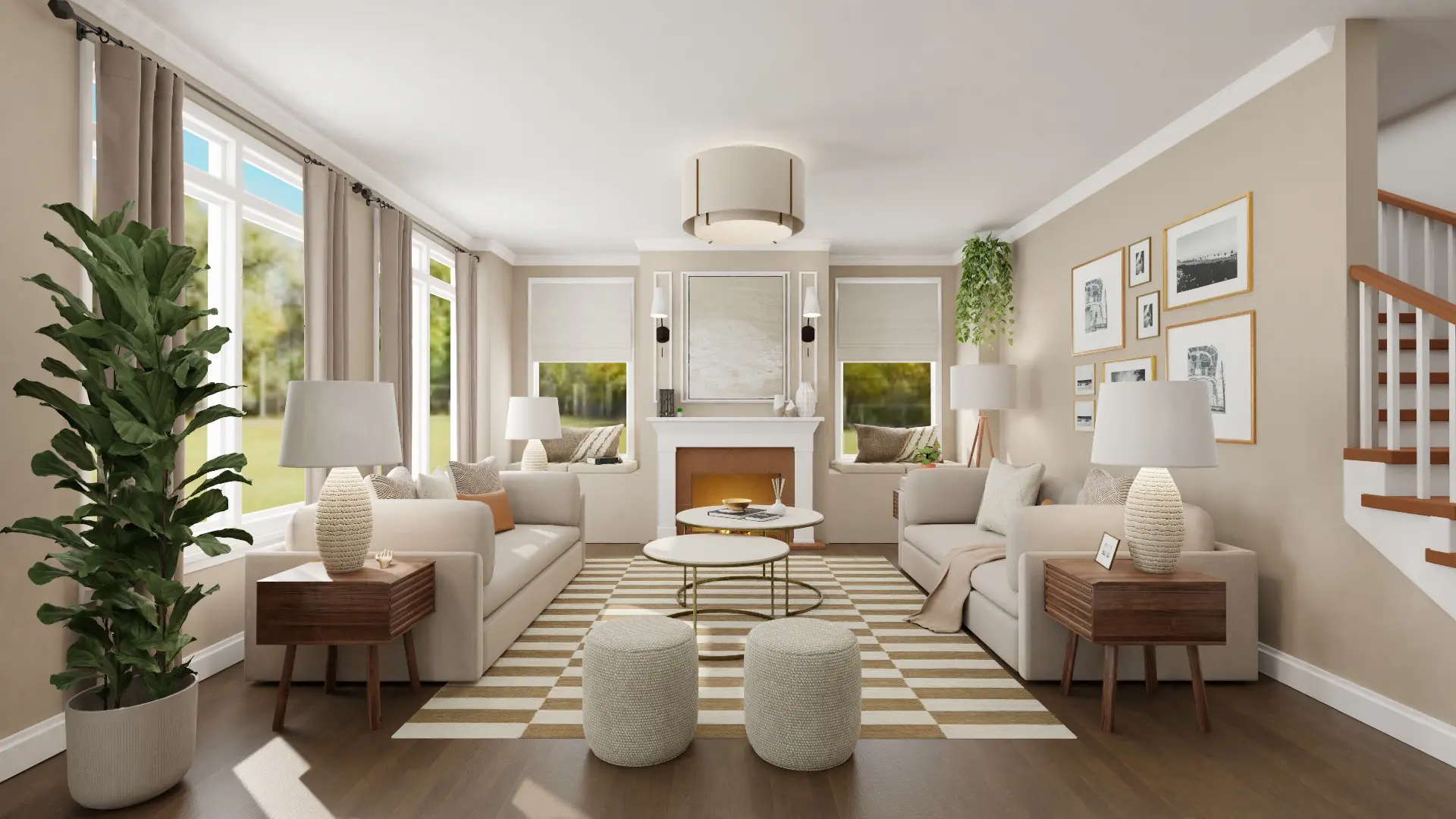
Selecting appropriate furniture is crucial for a functional dual-purpose space. Start with the centerpiece of your home office: the desk. Look for options that complement your dining room’s style while providing adequate workspace. Consider a desk that can double as a dining table when not in use or a hidden monitor desk.
Ergonomic seating is essential for productive work hours. Invest in a comfortable, adjustable office chair that can be easily tucked away or repurposed when not in use. For dining, consider chairs that are both comfortable for extended sitting and visually appealing.
Storage solutions are vital for maintaining an organized dual-purpose space. Look for furniture pieces that offer hidden storage, such as ottomans with removable tops or credenzas with ample drawer space. These can house office supplies and work materials, keeping them out of sight when the room is used for dining.
Flexible dining furniture can help maximize your space. Consider an expandable dining table that can be adjusted for different needs, from intimate dinners to larger gatherings. Folding chairs or stackable seating options can be stored away when not needed, freeing up valuable floor space.
Organizing Your New Space
Effective organization is key to making your dual-purpose room work seamlessly. Start by establishing clear work zones within the space. Designate areas for different tasks, such as a primary workspace for computer work, a secondary surface for writing or reading, and a storage area for supplies and documents.
Implementing a system for transitioning between office and dining use is crucial. Develop a routine for setting up your workspace at the beginning of the workday and packing it away when you’re done. This might involve using portable storage containers to house office supplies or designating a specific area where work items can be neatly stored out of sight.
Consider using a rolling cart or caddy to store frequently used office supplies. This allows you to easily move your work essentials to and from your workspace, keeping the dining area clutter-free when it’s time for meals.
Incorporating Storage and Organization
In a dual-purpose space, clever storage solutions are essential. Look for hidden storage opportunities, such as under-desk drawers, wall-mounted cabinets, or furniture with built-in compartments. These allow you to keep work materials close at hand but out of sight when not in use.
Utilize vertical space to maximize storage without sacrificing floor area. Wall-mounted shelves, pegboards, or a tall bookcase can provide ample storage while adding visual interest to the room. Consider using decorative boxes or baskets on these surfaces to conceal office supplies while maintaining a cohesive look.
Invest in multifunctional furniture with built-in storage. A sideboard or buffet can serve as both a dining room staple and a home for office equipment and supplies. Look for pieces with a mix of open and closed storage to balance display and concealment.
Maintaining Aesthetics and Decor
To create a cohesive dual-purpose space, focus on maintaining a consistent aesthetic throughout the room. Choose a color scheme that works well for both office and dining functions. Neutral tones can provide a calming backdrop for work, while accent colors can add warmth and personality for dining.
Incorporate plants and artwork to soften the office elements and create a more inviting atmosphere. Plants can improve air quality and reduce stress, making them perfect additions to a work environment. Artwork can serve as a focal point and tie together the room’s dual purposes.
Consider using room dividers or screens to create visual separation between work and dining areas when needed. A folding screen or a bookshelf used as a room divider can provide privacy during video calls and help mentally separate work and leisure time.
Tips for Daily Transitions
Establishing routines for setup and breakdown of your workspace is crucial for maintaining the dual functionality of your dining room. Create a checklist for the beginning and end of each workday to ensure a smooth transition between office and dining modes.
Use mobile storage solutions like rolling carts or file cabinets to quickly move work materials in and out of the space. This allows you to adapt the room to its current purpose without a lengthy setup process.
Maintaining a clutter-free environment is essential in a dual-purpose space. Implement a “clean desk policy” at the end of each workday, ensuring that all work materials are properly stored and the dining area is ready for use.
Overcoming Common Challenges
Dealing with limited space is a common challenge in dual-purpose rooms. Maximize every inch by choosing furniture with a small footprint and utilizing vertical space for storage. Consider wall-mounted desks or fold-down tables that can be tucked away when not in use.
Managing noise and distractions can be difficult when working in a shared living space. Use noise-cancelling headphones during work hours and establish clear boundaries with family members or roommates about work time and space.
Balancing work-life boundaries in a shared space requires discipline and clear communication. Set specific work hours and stick to them, and use visual cues like closing a laptop or covering your workspace to signal the end of the workday.
Transforming your dining room into a dual-purpose office space requires careful planning, creative solutions, and a willingness to adapt. By assessing your space, choosing the right furniture, implementing effective organization systems, and maintaining a cohesive aesthetic, you can create a functional and attractive area that serves both work and dining needs.
Remember that creating the perfect dual-purpose space is an ongoing process. Be prepared to make adjustments as you discover what works best for your specific needs and lifestyle. With time and attention, your dining room can become a versatile, efficient space that enhances both your work productivity and your home life.
By embracing the concept of multi-functional living, you’re not just solving a practical problem – you’re creating a space that reflects the evolving nature of modern work and home life. Your reimagined dining room will stand as a testament to adaptability, creativity, and the art of making the most of your living space.

